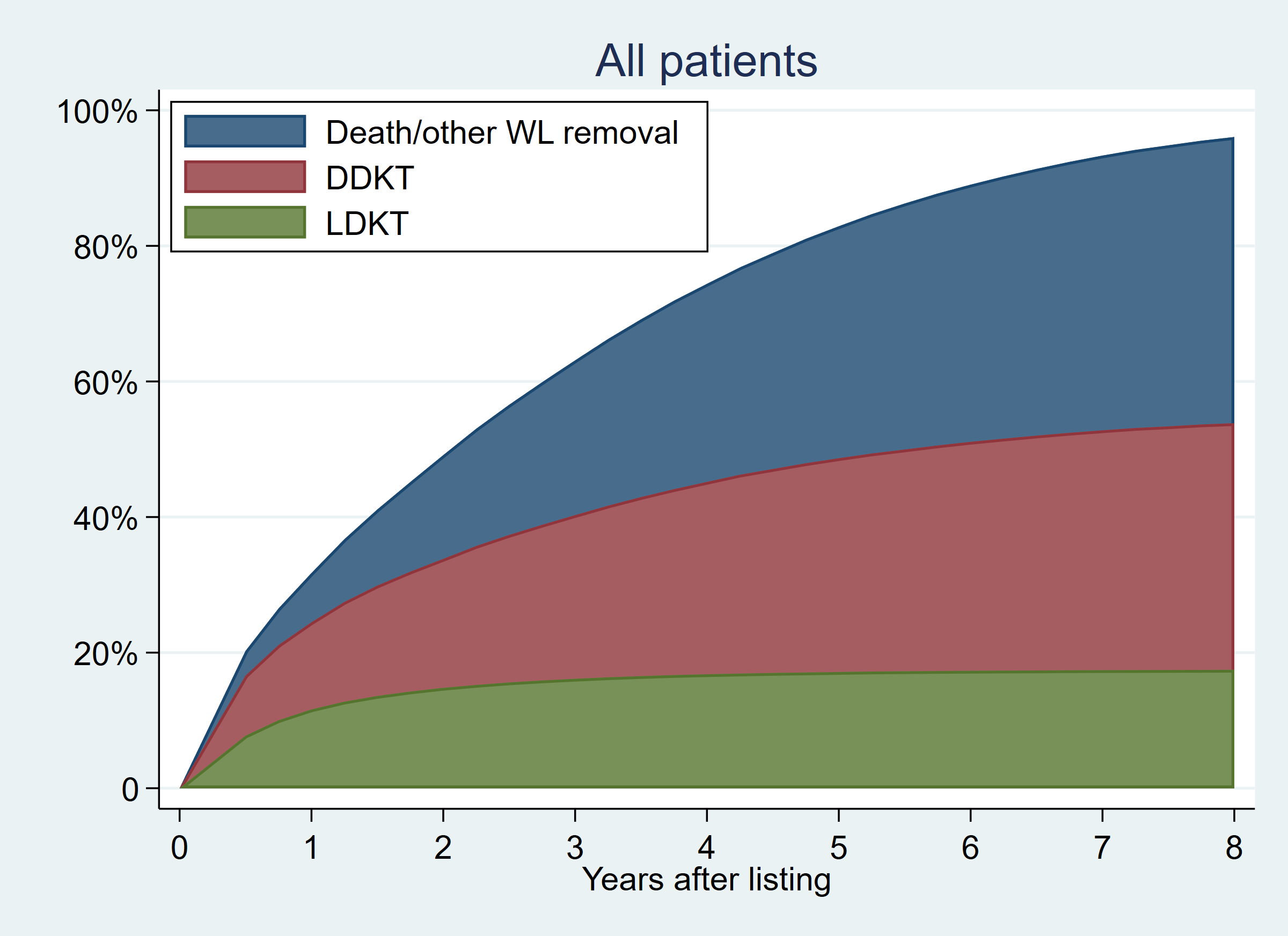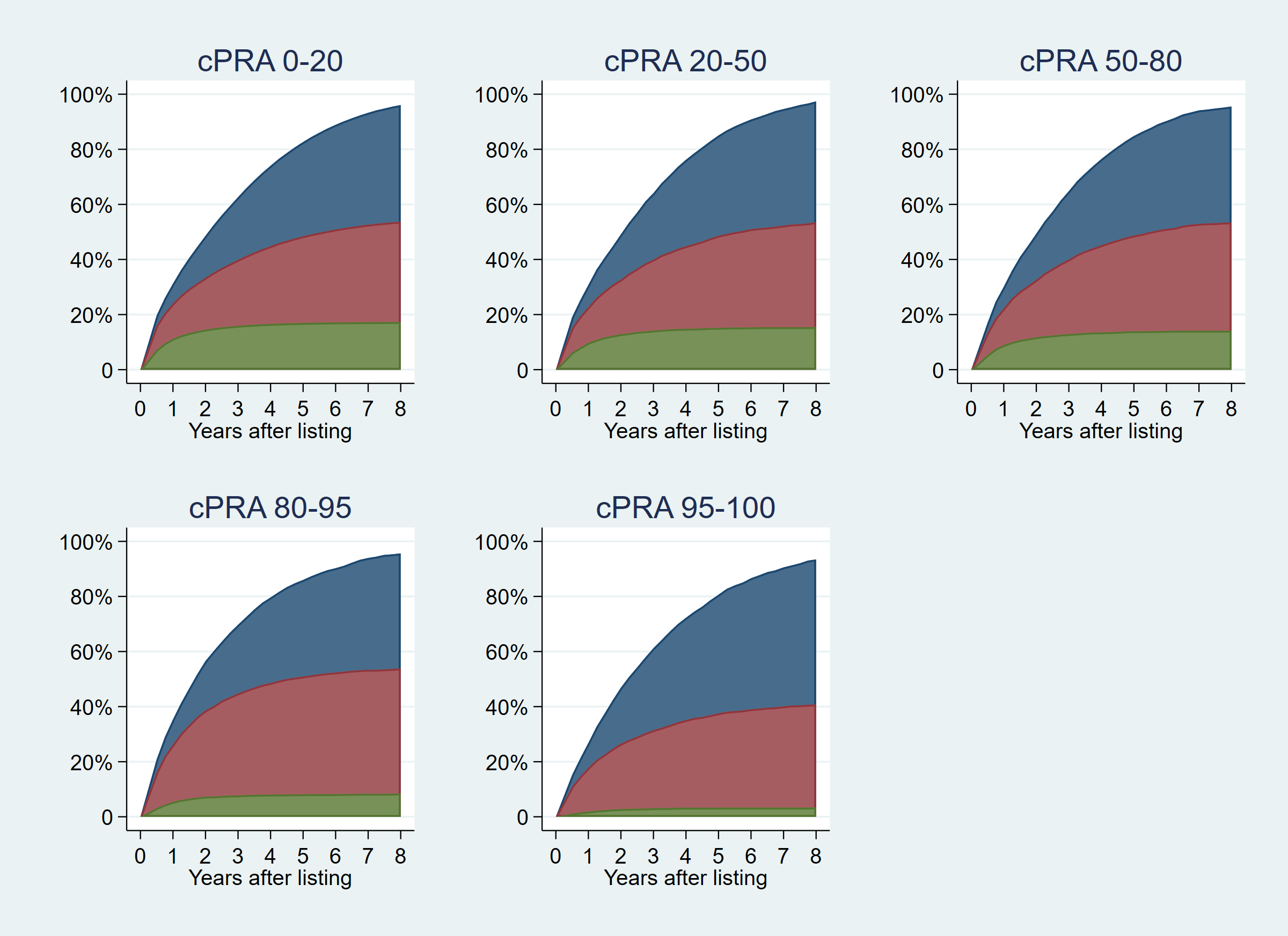The Natural History of Waitlist Candidates in the United States
1Johns Hopkins School of Medicine, Baltimore, MD, 2Johns Hopkins, Baltimore, MD
Meeting: 2020 American Transplant Congress
Abstract number: 264
Keywords: Panel reactive antibodies
Session Information
Session Name: All Organs: Disparities to Outcome and Access to Healthcare I
Session Type: Oral Abstract Session
Date: Saturday, May 30, 2020
Session Time: 3:15pm-4:45pm
 Presentation Time: 3:15pm-3:27pm
Presentation Time: 3:15pm-3:27pm
Location: Virtual
*Purpose: Estimates of time to deceased-donor transplantation (DDKT) generally fail to take into account the competing risks of mortality. Understanding the natural history of KT registrants – their chance of DDKT/LDKT/death based on individual characteristics – can inform referrals for transplantation, counseling for transplant candidates, and allocation policy.
*Methods: Using SRTR data on 323,108 waitlist registrants 1/2010-6/2019, we modeled time to DDKT, LDKT, or waitlist mortality in a competing-risks framework, overall and for clinically relevant subgroups of patients (based on candidate age, ABO blood type, PRA, and pre/post-KAS). Competing-risks regression was used to model individual n-year chance of DDKT/LDKT/mortality based on candidate characteristics.
*Results: Among all patients, 8-year cumulative incidence of LDKT/DDKT/waitlist mortality was 17.5%/36.4%/42.2% respectively (Figure 1). 8-year incidence of waitlist mortality was higher than incidence of DDKT across PRA categories, except for PRA 80-95 (Figure 2). Pediatric registrants had substantially higher incidence of DDKT than waitlist mortality (63.8% vs 8.2%), but adults had higher incidence of waitlist mortality than DDKT, particularly patients above age 65 (54% vs 31.7%) Overall 4-year incidence of DDKT was higher post-KAS (30.8%) than pre-KAS (26.1%). Individual estimates of the chance of DDKT and risk of waitlist mortality can be personalized based on candidate attributes.
*Conclusions: Despite a focus in the transplant community on small differences in one-year outcomes and a reluctance to use kidneys that have slightly worse outcome, it is sobering to realize that the most common outcome for most waitlist registrants is death on the waitlist. Early DDKT incidence improved under KAS, but high incidence of waitlist mortality will only be remedied through aggressive efforts to increase the living and deceased donor organ pool.
To cite this abstract in AMA style:
Massie A, Segev D. The Natural History of Waitlist Candidates in the United States [abstract]. Am J Transplant. 2020; 20 (suppl 3). https://atcmeetingabstracts.com/abstract/the-natural-history-of-waitlist-candidates-in-the-united-states/. Accessed December 15, 2025.« Back to 2020 American Transplant Congress


